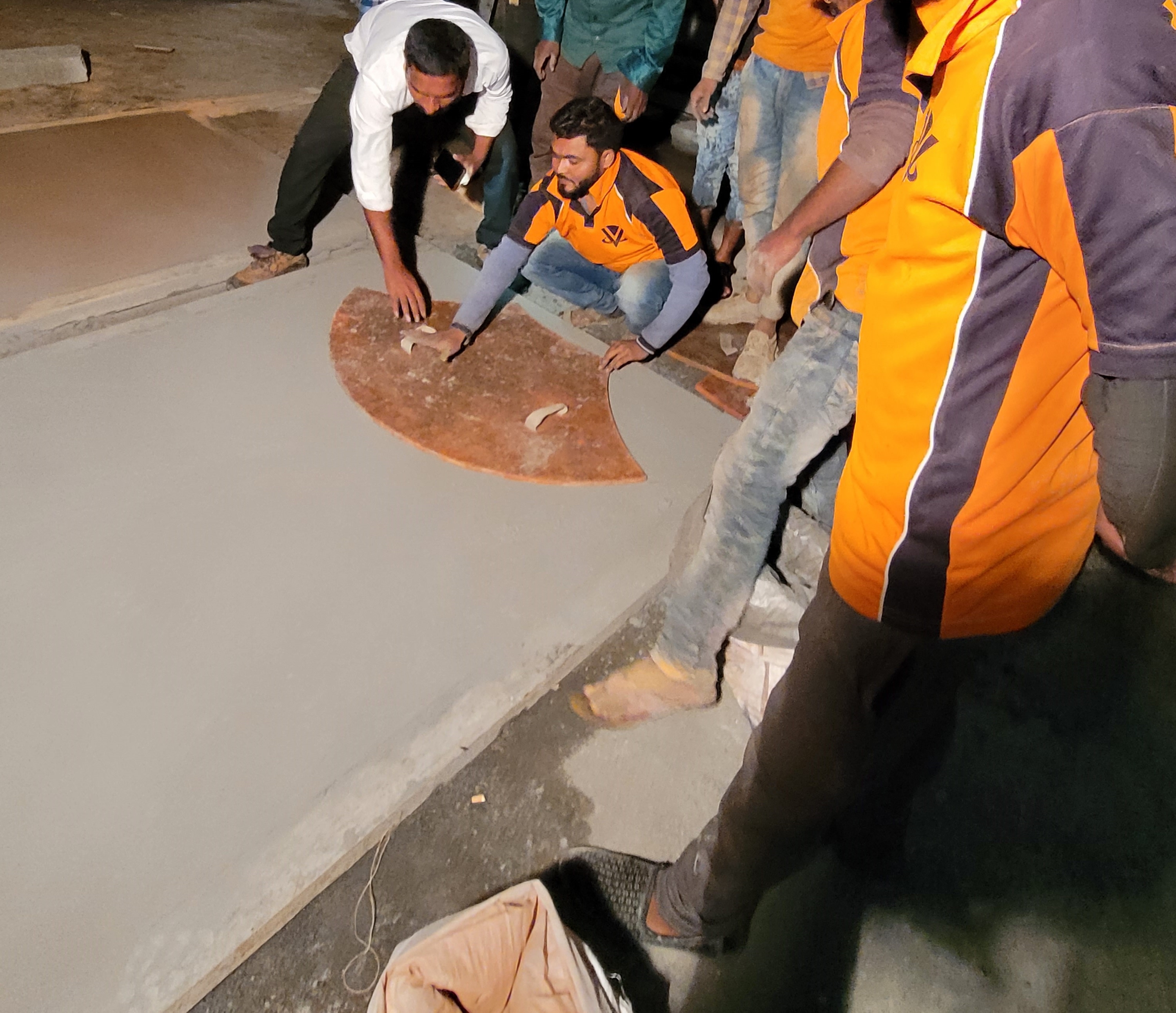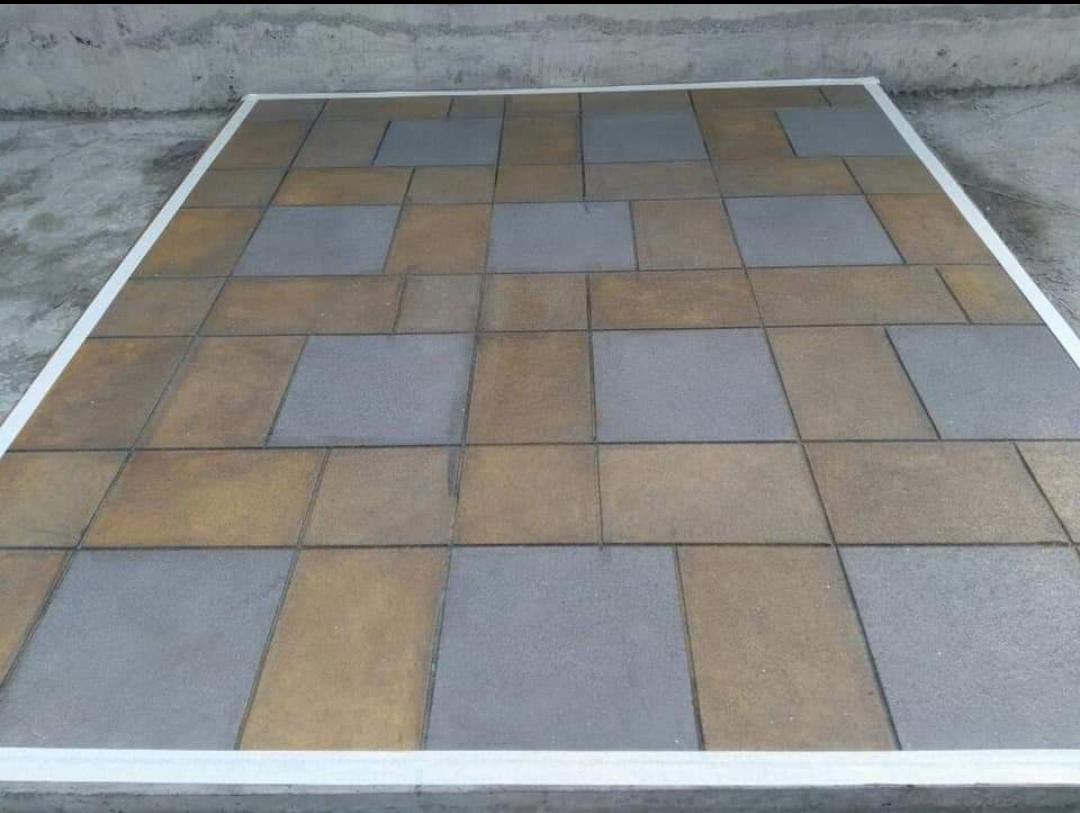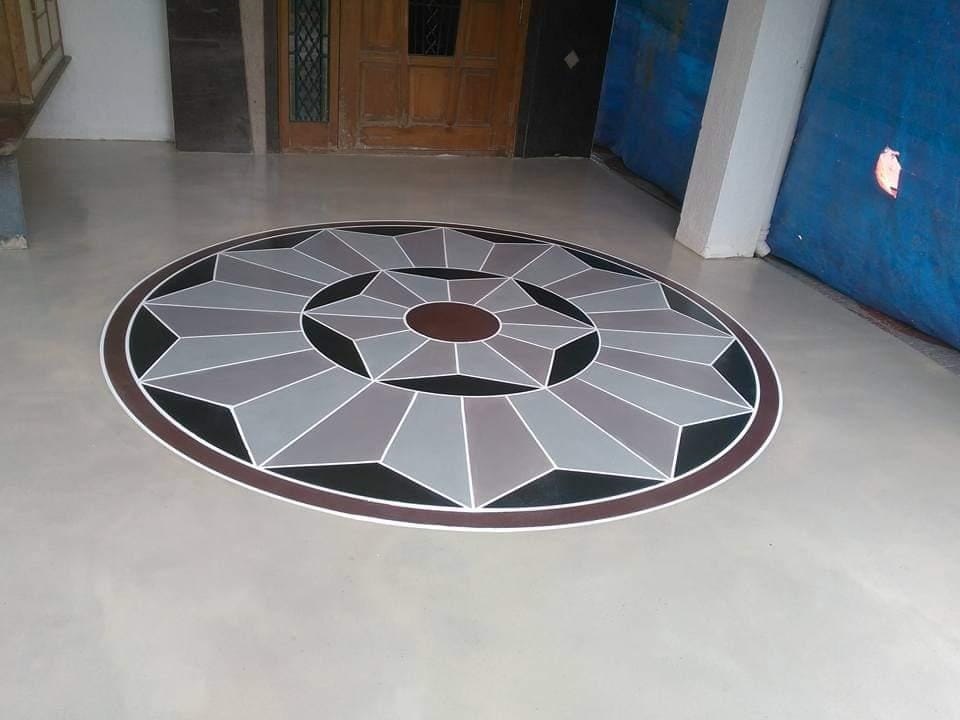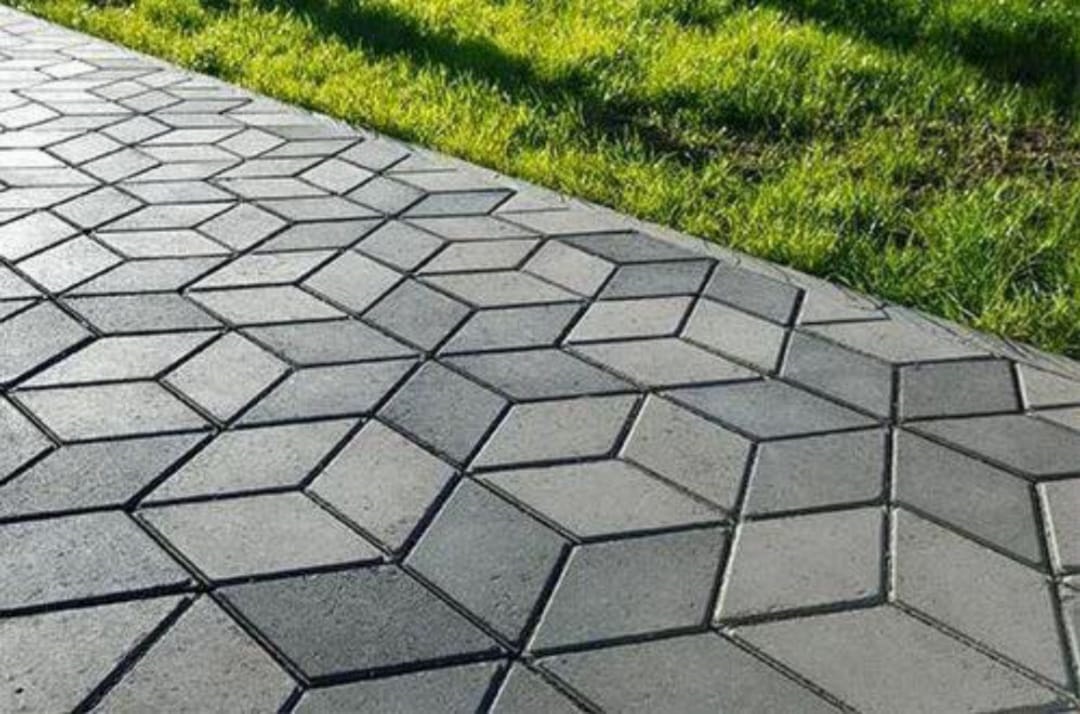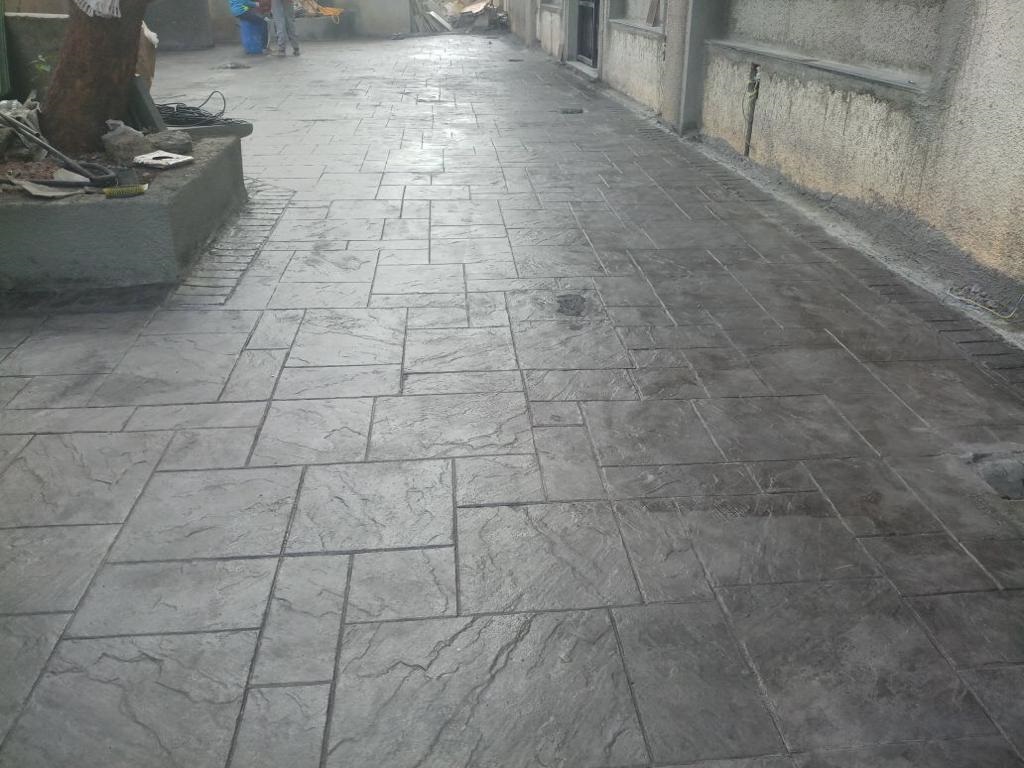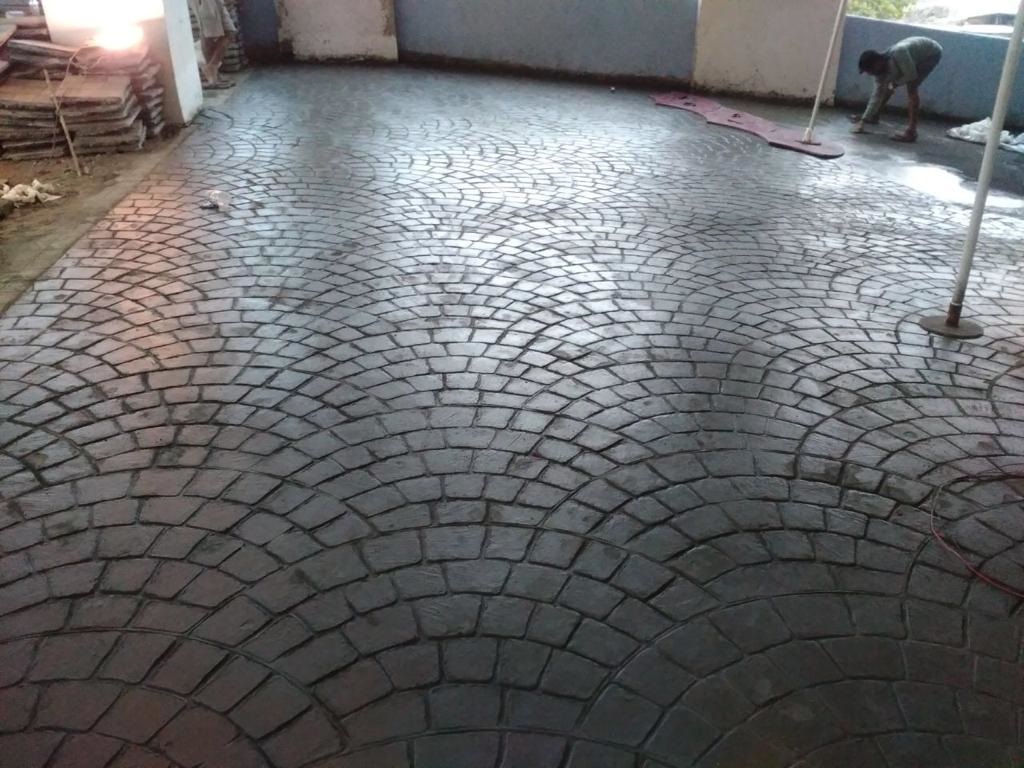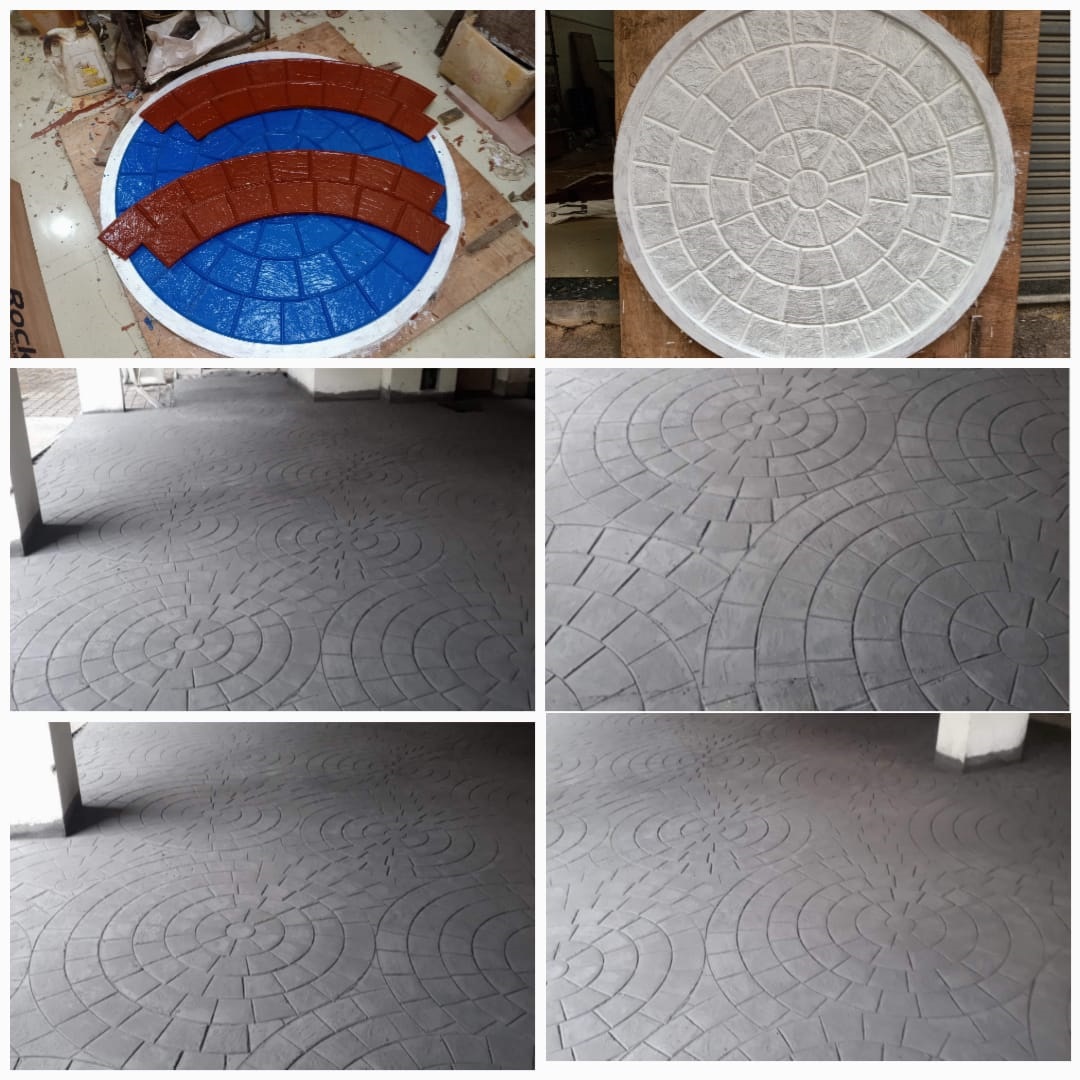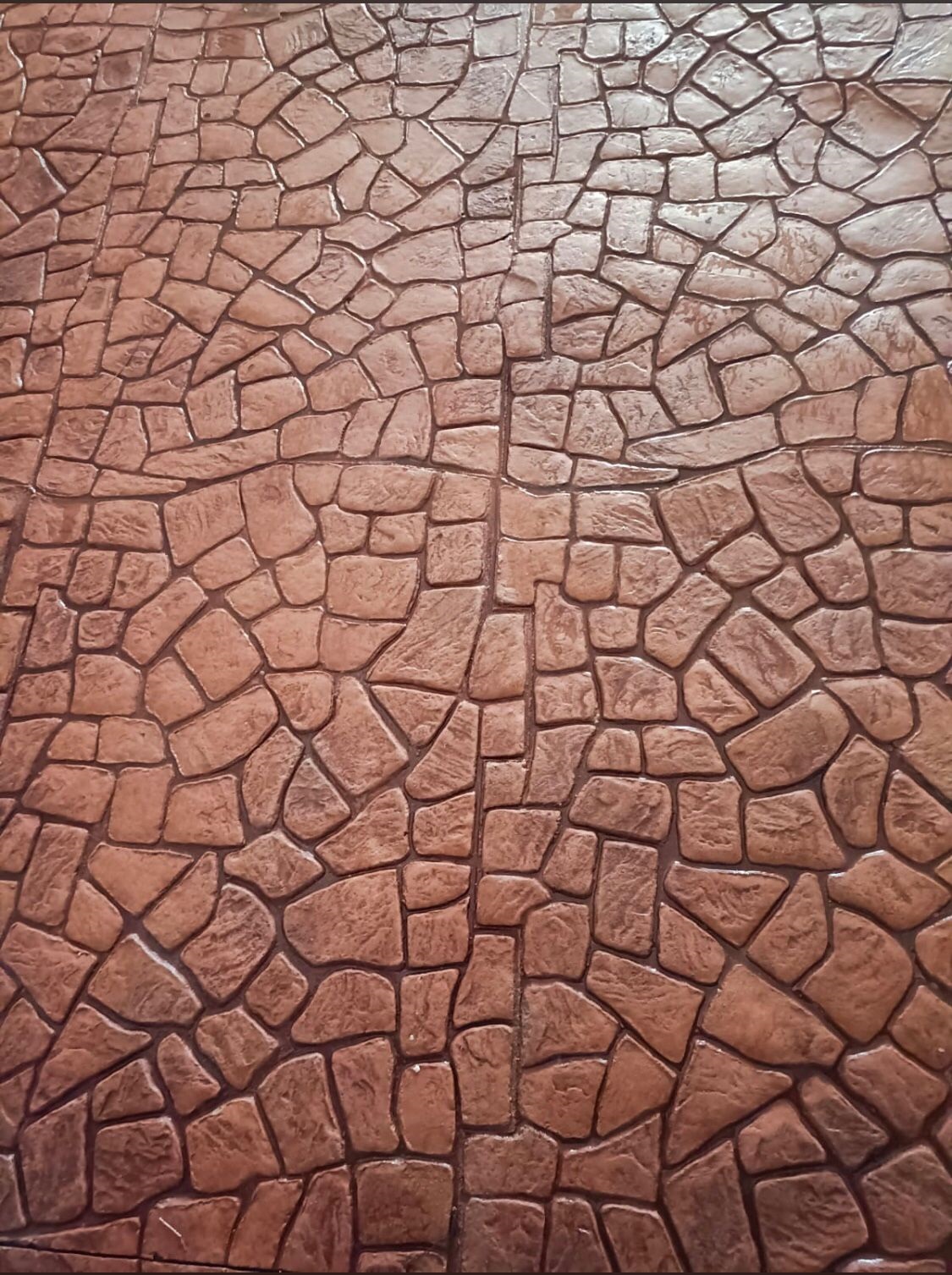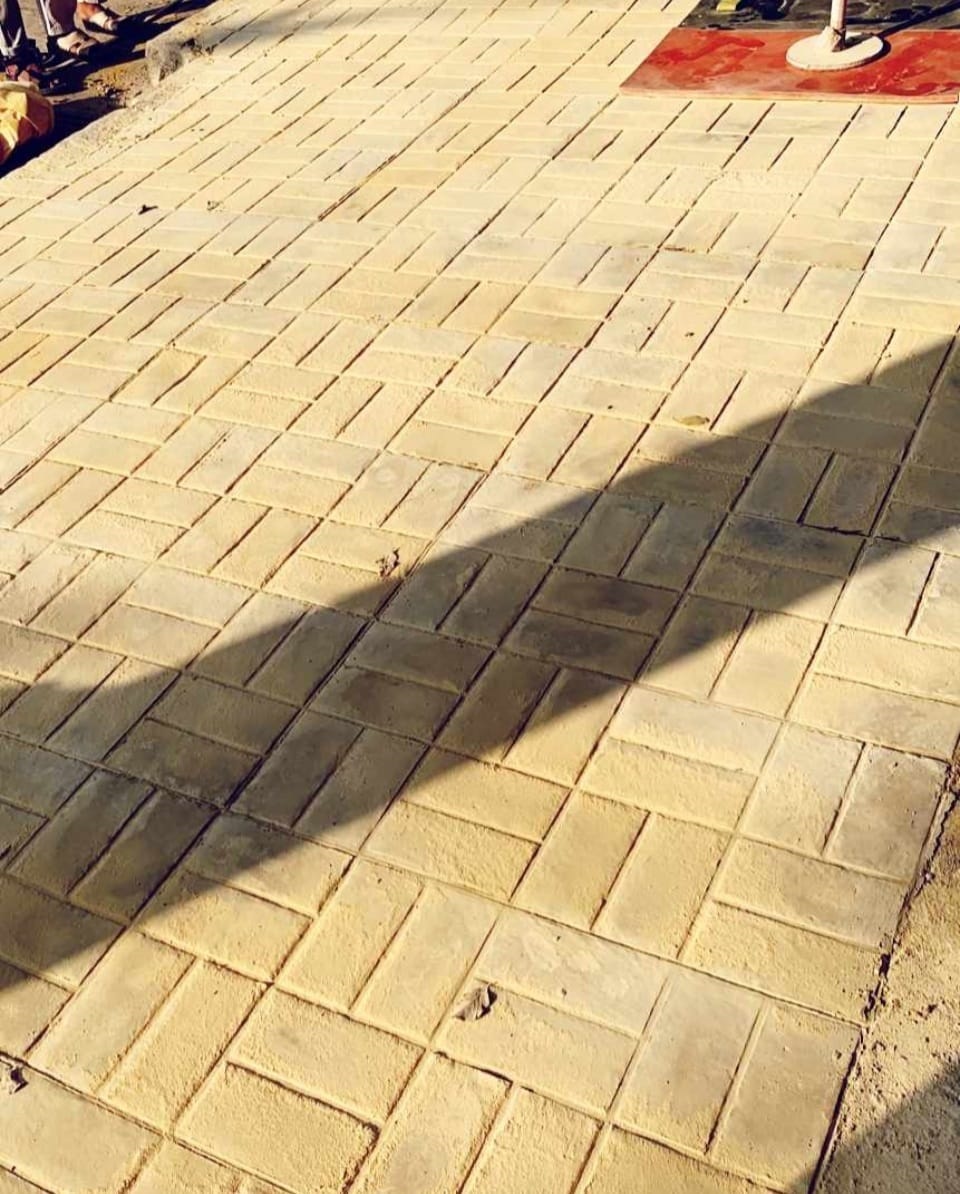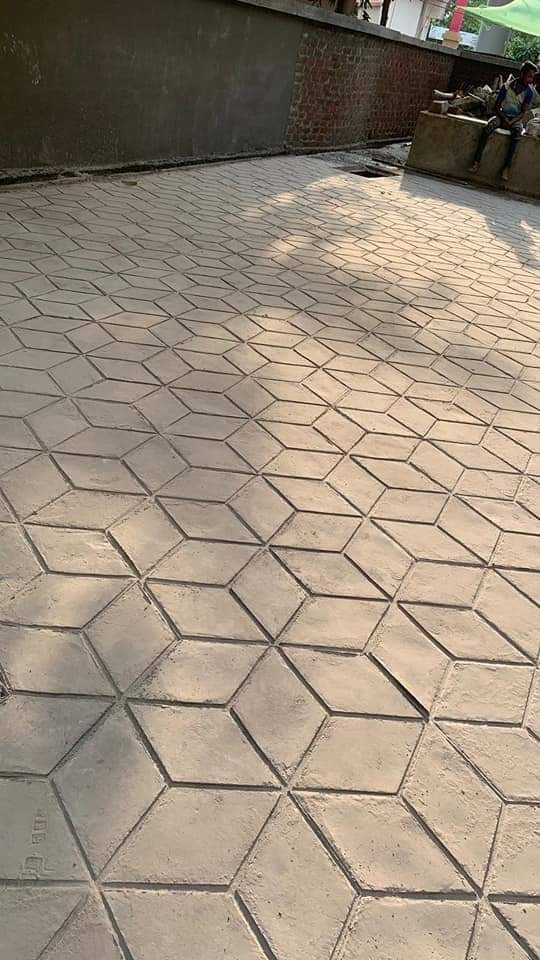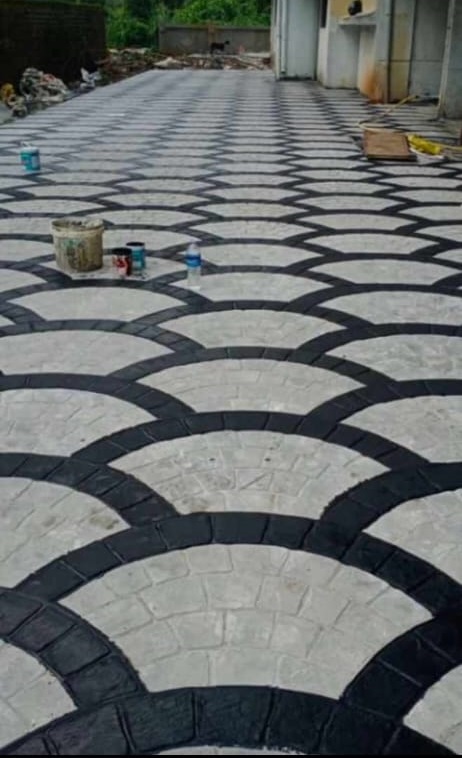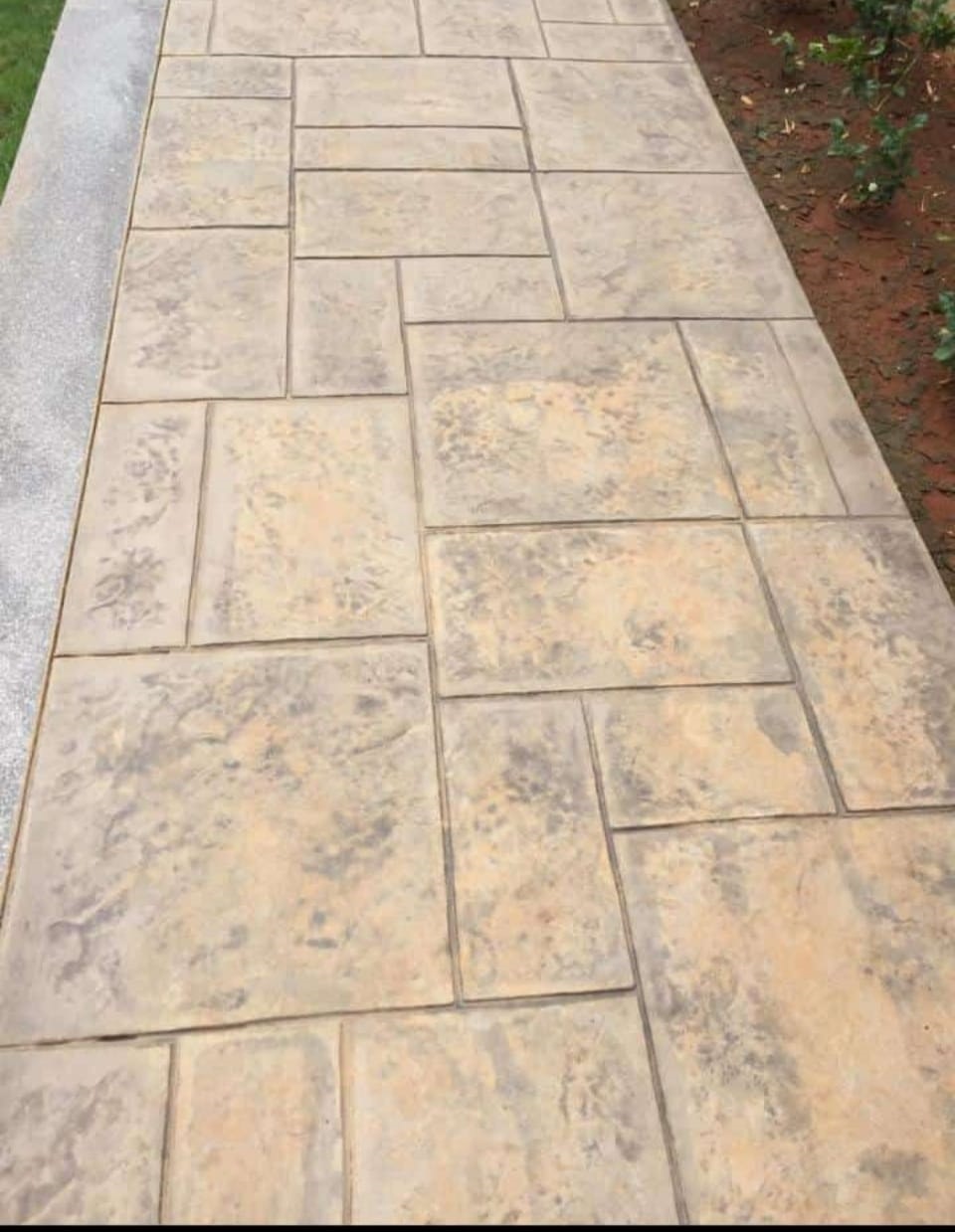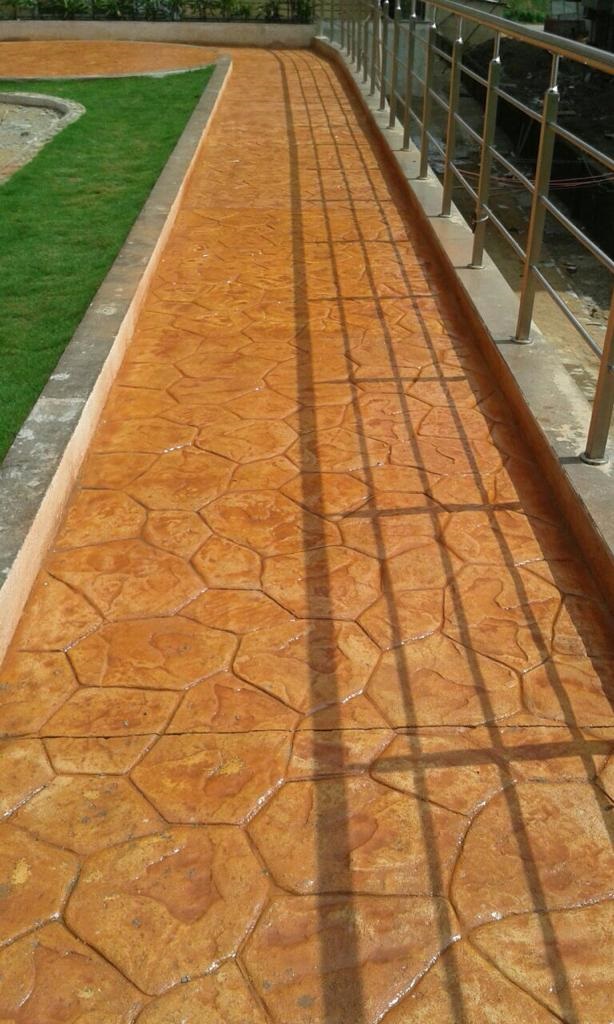Stamped concrete
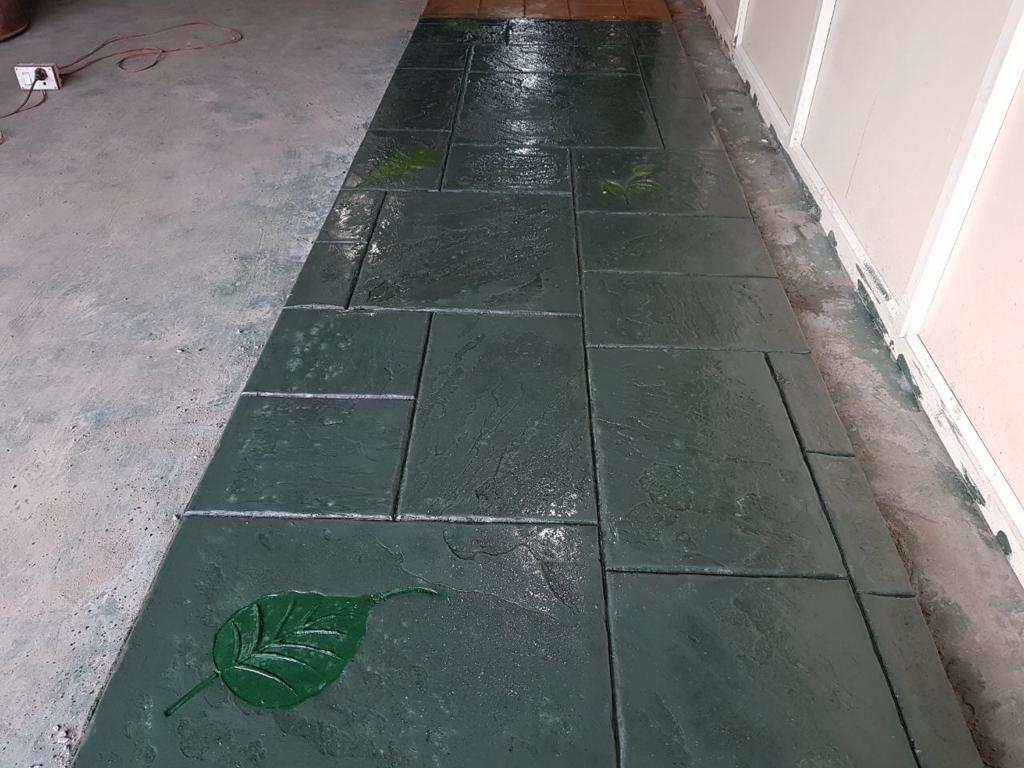
Stamping concrete increased in popularity in the 1970s when it was first introduced in the World of Concrete. Builders saw it as a new way to satisfy the customer and make their budget work simultaneously. This technique of stamping concrete has been done since at least the 1950s. When stamping concrete first began, there were very few choices of design and colors. However, as the industry grew more stamping patterns were being created along with many different types of stains. Another advantage to using stamped concrete is that it can be applied to many different surfaces and textures, such as driveways, highways, patios, decks, and even floors inside the home.


